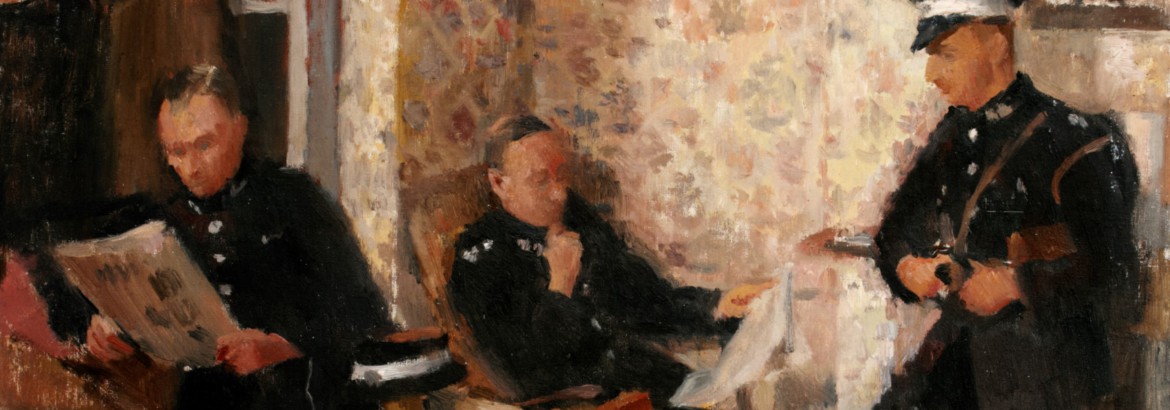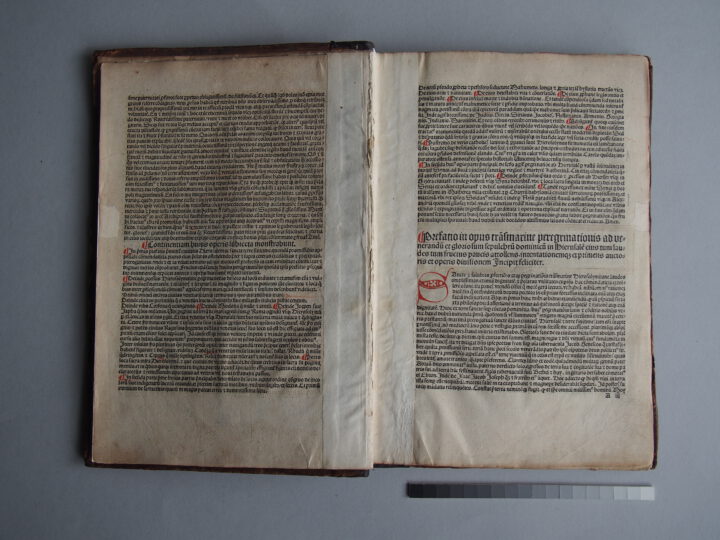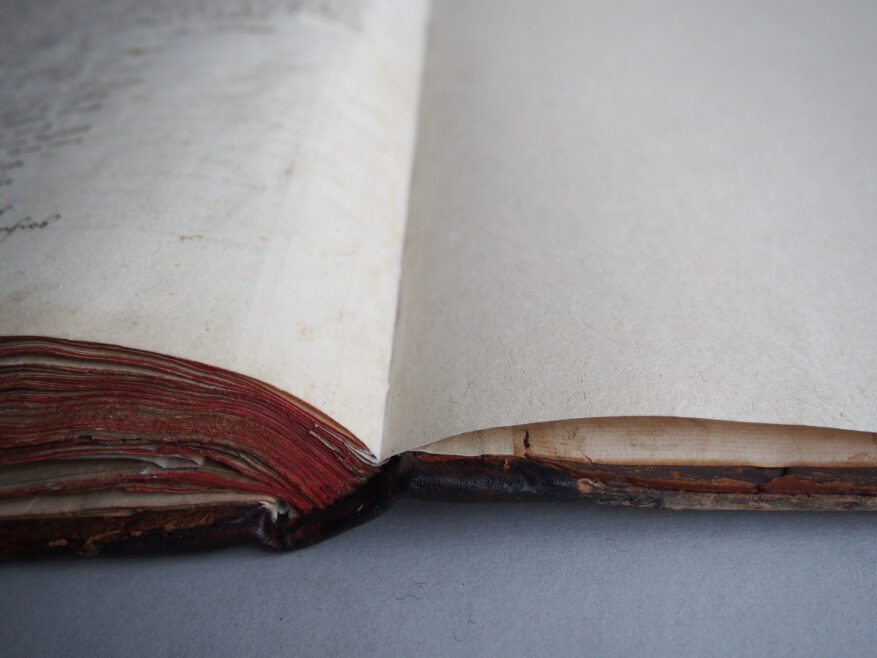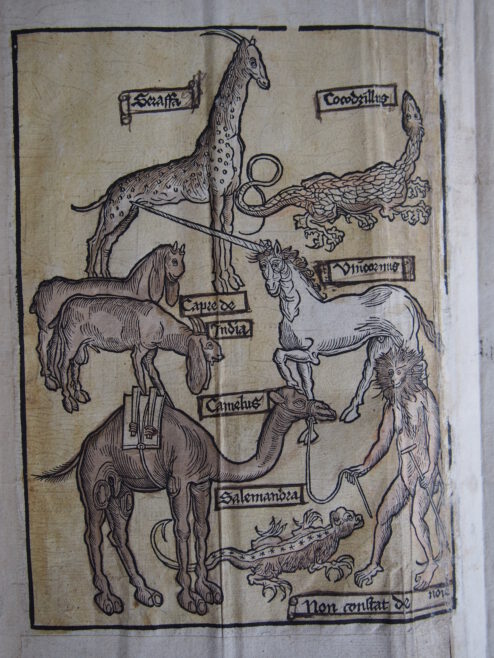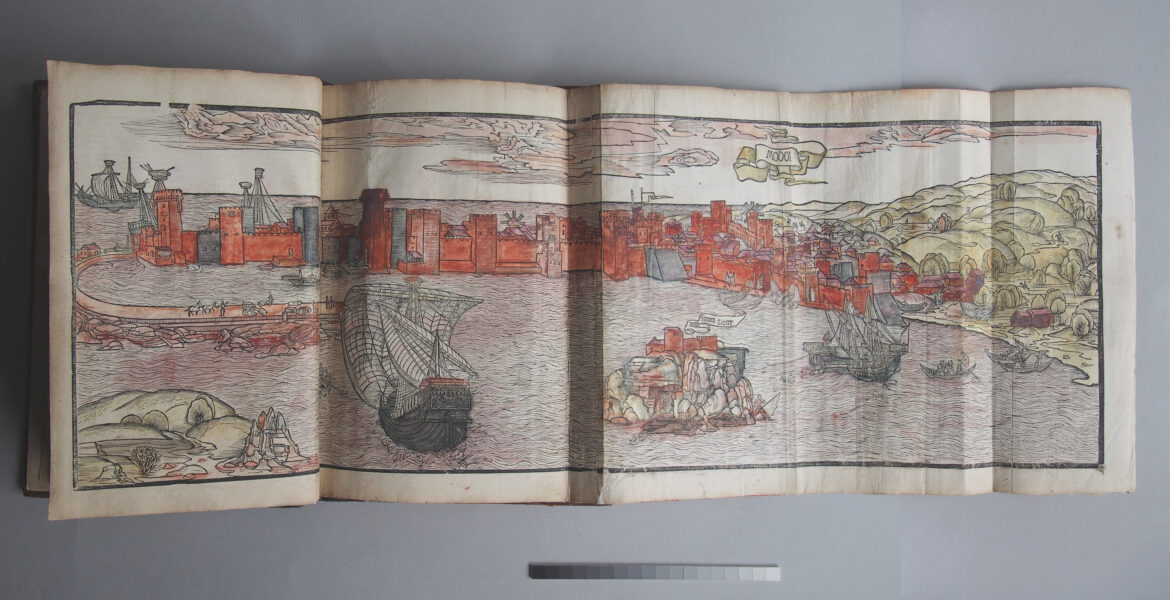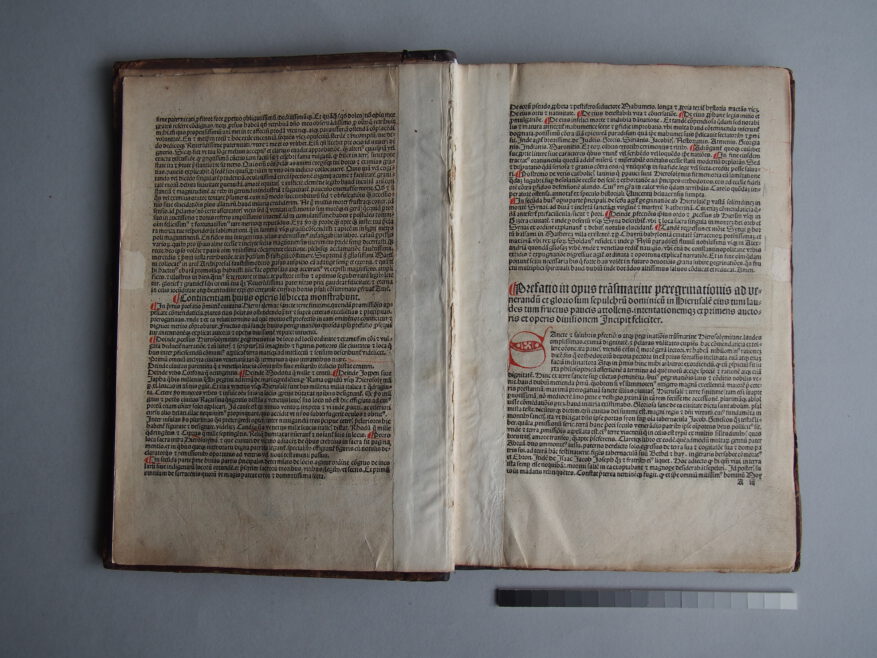This is the third edition of Peregrinationes in Terram Sanctam (Pilgrimages to the Holy Land) and was printed by Peter Drach in Speyer in Germany. The book is an account of a journey made by the author, Bernhard von Breydenbach, from Venice to Jerusalem, and back via Cairo and Alexandria, between 1483 and 1484.
In 2020, thanks to funding from the St John Historical Society, the book was conserved by Abigail Bainbridge and as part of this was cleaned throughout with cosmetic sponges. Many old repairs were removed to allow for more sympathetic repairs to be made with Japanese paper and wheat starch paste and in some places this revealed writing or an image that had previously been concealed.
Von Breydenbach’s pilgrimage route took him through the cities of Padua and Venice (in modern-day Italy) and Parens (now known as Poreč, in modern-day Croatia), the island of Corfu, the Greek cities of Dodona, Methoni and Heraklion, the island of Rhodes (then home to the Knights Hospitaller) and Cyprus, the cities of Jerusalem (including Church of the Holy Sepulchre, Temple of Solomon, Mount of Olives), Bethlehem and Bethany (now known as Al-Eizariya) (both in the West Bank), and Cairo and Alexandria in Egypt.
The book includes information about the author’s co-travellers, a diary of the journey, as well as historical and topographical information, and information on the relics of local saints, castles, and places of religious interest along his route. There are also descriptions of the sieges of Constantinople, Rhodes, Negroponte and Otranto (all of which had happened shortly before he travelled), and even remedies against sea-sickness and vermin.
The text is in Latin and has been letterpress-printed in a gothic typeface. There is some ‘rubrication,’ which means the addition of letters in red for emphasis. The book is illustrated with woodcut prints based on drawings by Erhard Reuwich. There are illustrations of places of religious interest in and around Jerusalem, including the Church of the Holy Sepulchre, and figures of Jews, Greeks-Cretans and Syrians.

There are six full-page woodcut images, five of which are hand coloured in bright red, crimson red/maroon, yellow, grey-brown and brown. These include fold-out panoramas of Venice, Methoni, Crete and Rhodes. These fold-outs used to fold and curl in many places where they should not, causing the book to not lie flat and making it difficult to view the images. As part of the conservation work, they were re-trained to fold in the original places and the paper was reinforced where it was folded in the wrong place.
There are depictions in the manuscript of animals in Egypt, including a giraffe, a salamander, a crocodile, a baboon, a goat or a ram, and a camel, but also, surprisingly, a unicorn. Unicorns are often found in travel guides, memoirs and bestiaries, where they straddle the line between real and mythological.
The manuscript is bound between leather boards which are likely to date from the 17th or 18th century, although they have been much repaired. The leather spine is a modern replacement, possibly dating from the late 1970s. As part of the conservation of the book, loose leaves were reattached, and a handmade paper flyleaf (blank page) was added at the end of the book to protect the manuscript and the cover from one other. The book is now in a beautiful condition, ready to be enjoyed by generations to come.



